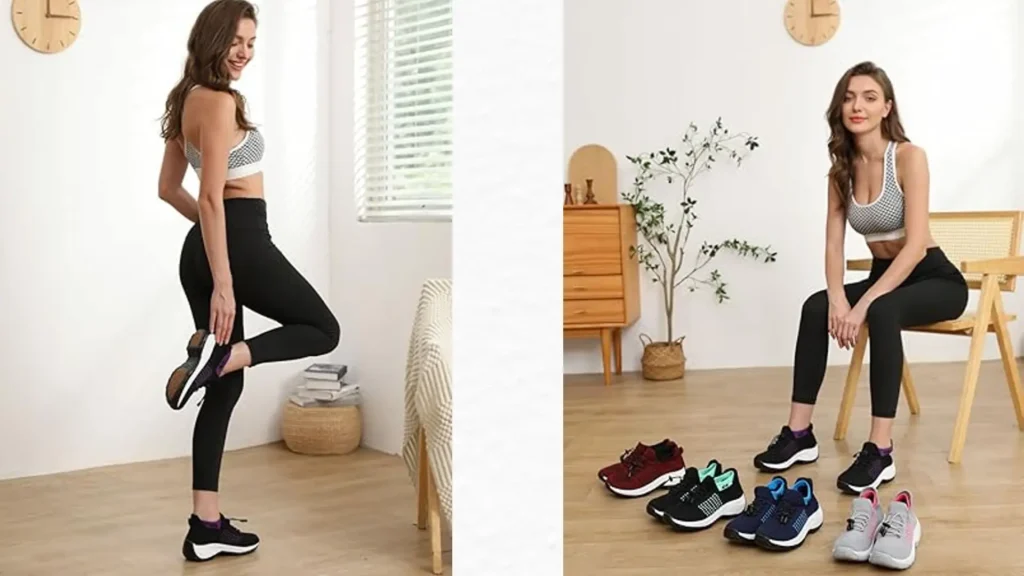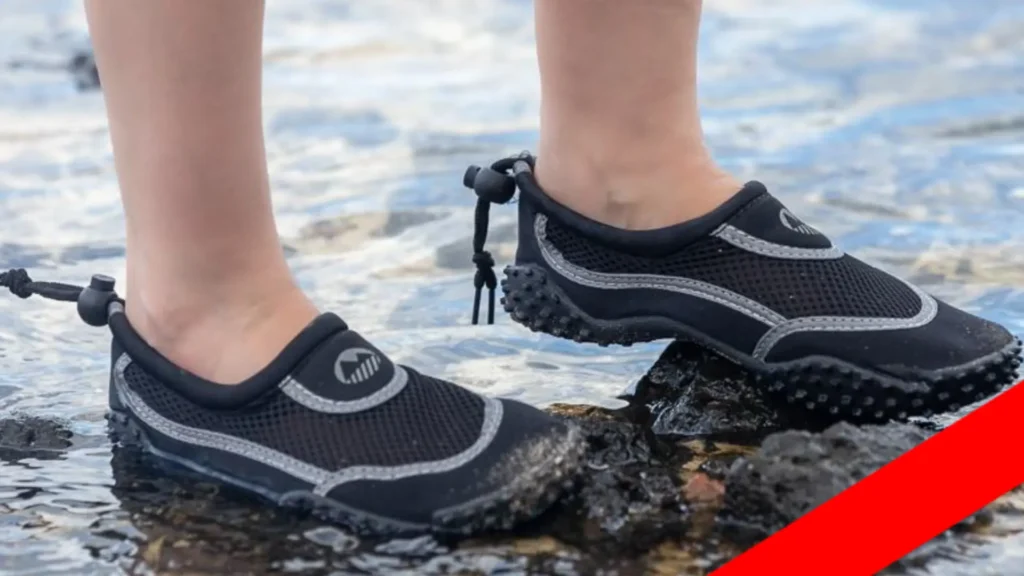You may not notice it at first. You walk, run, and stand on your feet each day. But slowly, your knees ache, your ankles feel weak, and your lower back gets sore. The cause is not always in your muscles or bones—it can start with the way your feet roll inward when you walk.
This rolling inward is called overpronation. Many people have it without knowing. Left unchecked, it can lead to flat feet, constant pain, and injuries that do not go away. The good news is that one simple solution makes a huge difference: orthopedic shoes designed for overpronation.
That is where we begin. You are about to discover how the right shoes can protect your joints, fix your gait, and give your body the support it has been missing.
Why Overpronation Matters More Than You Think
Overpronation is not rare. Research shows that it affects about 20–30% of the population. That is millions of people struggling with a problem most have not identified.
Here is what happens step by step. When your foot hits the ground, it rolls inward more than it should. This shifts your body weight unevenly. Your arch collapses. Your ankle twists. The pressure builds up in the wrong places.
This does not stay in your foot. It climbs up your body. Your knees begin to absorb stress they should not. Your hips rotate in ways they were never meant to. Your spine tries to adjust. Suddenly, what started in your foot shows up as pain in your knees, hips, or back.
Many try to fix this with rest or painkillers. That does not work. The root cause is mechanical. Without correcting the motion, the pain keeps coming back. Orthopedic shoes give the correction that your feet need.
Here is what we will explore: how orthopedic shoes help with overpronation, what features matter most, who benefits from them, and how to choose the right pair for your life.
The Power of Orthopedic Shoes
Orthopedic shoes are built to change how your foot moves. They do not just cover your feet. They guide every step, shaping the way your foot contacts the ground and how your body absorbs impact. This guidance is critical for overpronation because every misaligned step compounds stress throughout your legs and back.
For overpronation, the key elements are support and alignment. A good orthopedic shoe has a firm midsole that stops your foot from rolling inward too far. This firm base ensures that your arch does not collapse under pressure, which is the root of the problem.
Without a firm midsole, your foot continues to collapse, and the chain of stress keeps moving up to your knees and hips.
Arch support is equally important. Overpronation causes the inner part of your foot to sink toward the ground. Orthopedic shoes provide structured support that holds your arch in its natural position. This reduces the inward roll and allows your foot muscles to work efficiently instead of struggling to maintain stability. Some shoes also allow for custom insoles, giving personalized support for arches that are low, high, or uneven.
The heel counter plays a major role as well. This is the back part of the shoe that wraps tightly around your heel.
A strong heel counter keeps your ankle from twisting inward, which reduces the risk of sprains and long-term ankle instability. Without a proper heel counter, even a shoe with excellent arch support may fail to control your motion effectively.
Orthopedic shoes also distribute pressure evenly across your foot. Every step in these shoes changes how your body absorbs weight. Instead of forcing certain joints to take the load, the shoe balances pressure from heel to toe. This reduces strain on your knees, hips, and lower back. It allows your body to move naturally without compensating for misalignment.
The benefits are tangible. People who switch to orthopedic shoes often notice less foot pain, fewer knee or hip problems, and improved balance and endurance. Some patients with chronic knee or shin pain experience relief in just a few weeks. For people who walk or stand all day, the difference is life-changing—they feel lighter on their feet and more stable.
But here is a critical point: not all orthopedic shoes are created equal. Some provide general comfort and support, but they are not designed for overpronation. Shoes built specifically for overpronation target the inward roll, giving firm midsole support, arch stability, and strong heel counters.
Choosing a shoe without these features may produce little or no improvement. Selecting the right shoe can make the difference between continued discomfort and walking without pain for hours.
Choosing the Right Shoes for Overpronation
This is where most people get stuck. The market is full of options. But only some are truly built to fix overpronation.
Here is what you need to look for:
- Arch Support That Matches Your Foot: If your arch collapses inward, you need firm arch support. But it should not be too high or too low. Shoes with adjustable insoles or custom orthotics give the best fit.
- Firm Midsole for Stability: The midsole is the heart of the shoe. A soft midsole feels nice but does not control overpronation. A firm one keeps your stride stable and prevents inward rolling.
- Heel Counter Strength: Your heel must stay in place. A rigid heel counter holds your ankle steady. Without this, your foot keeps twisting.
- Wide Base for Balance: Shoes with a broad base at the sole give you extra stability. Narrow shoes can increase the risk of ankle rolling.
- Room in the Toe Box: Your toes should not be squeezed. A roomy toe box helps your foot spread naturally with each step.
- Durable Outsole Grip: The bottom of the shoe should grip well. This reduces the chance of slips and gives a smoother stride.
Now, you might ask: should you use custom orthotics or rely on built-in support? The answer depends on your case. For mild overpronation, high-quality orthopedic shoes alone may be enough. For moderate to severe cases, combining shoes with custom orthotics can give the best results.
Another key tip: replace shoes on time. Even the best orthopedic shoe wears down with use. The support weakens, and the benefits fade. Most shoes last about 300–500 miles of walking. If you wear them daily, this can mean replacing them every 6–12 months.
Living Free from Pain and Injury
The true payoff of orthopedic shoes comes when you feel the difference in daily life. Imagine walking long distances without sore ankles or swollen feet. Picture running errands without knee pain slowing you down.
Think about standing for hours without your back or hips complaining. These are not distant dreams—they are possible when your feet are properly supported.
Orthopedic shoes make this real for people with overpronation. They turn a constant source of discomfort into something manageable and predictable. Every step becomes more stable. Your body does not have to compensate for misalignment, so fatigue decreases and movement feels smoother.
Over time, this consistent support also prevents future injuries. Research shows that correcting overpronation reduces the risk of common issues such as plantar fasciitis, shin splints, stress fractures, and knee arthritis.
Athletes feel this difference strongly. Overpronation throws off balance and alignment, which increases the chance of injuries in sports that involve running, jumping, or sudden changes of direction.
Wearing orthopedic shoes designed for overpronation restores proper alignment, allowing performance to improve while lowering the risk of ankle sprains, knee pain, and repetitive stress injuries. Proper support helps the muscles and tendons work efficiently without compensating for unstable footing.
Workers who spend long hours on their feet—teachers, nurses, retail staff, and factory workers—can experience a dramatic change. Orthopedic shoes reduce daily fatigue, lower joint strain, and prevent minor aches from becoming chronic problems.
By supporting arches and stabilizing heels, these shoes save energy in every step, so your body feels less worn at the end of the day.
The impact goes beyond comfort. It is about long-term joint health. Every step in well-designed orthopedic shoes spreads pressure evenly, protects vulnerable joints, and reduces wear and tear over years.
This helps maintain mobility, reduce pain, and safeguard quality of life as you age. Proper footwear is an investment in your body’s future, giving your knees, hips, and spine a better chance to stay strong and healthy.
Overpronation is easy to ignore but costly to live with. It starts small but spreads its effects through your whole body. The solution is not rest or medication. It is correcting the way your foot moves.
Orthopedic shoes for overpronation give that correction. They support your arch, steady your heel, and guide your stride. They protect your knees, hips, and back from years of strain.
The decision is simple. You can keep wearing shoes that let your foot roll inward, or you can choose shoes that restore balance and protect your health. Orthopedic shoes are not just footwear. They are tools that keep your body aligned and pain-free.
Your next step matters. Make it a supported one.




